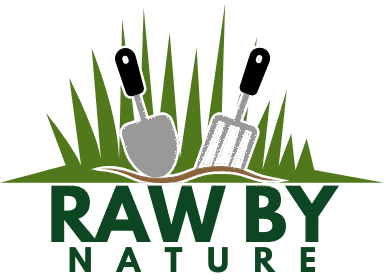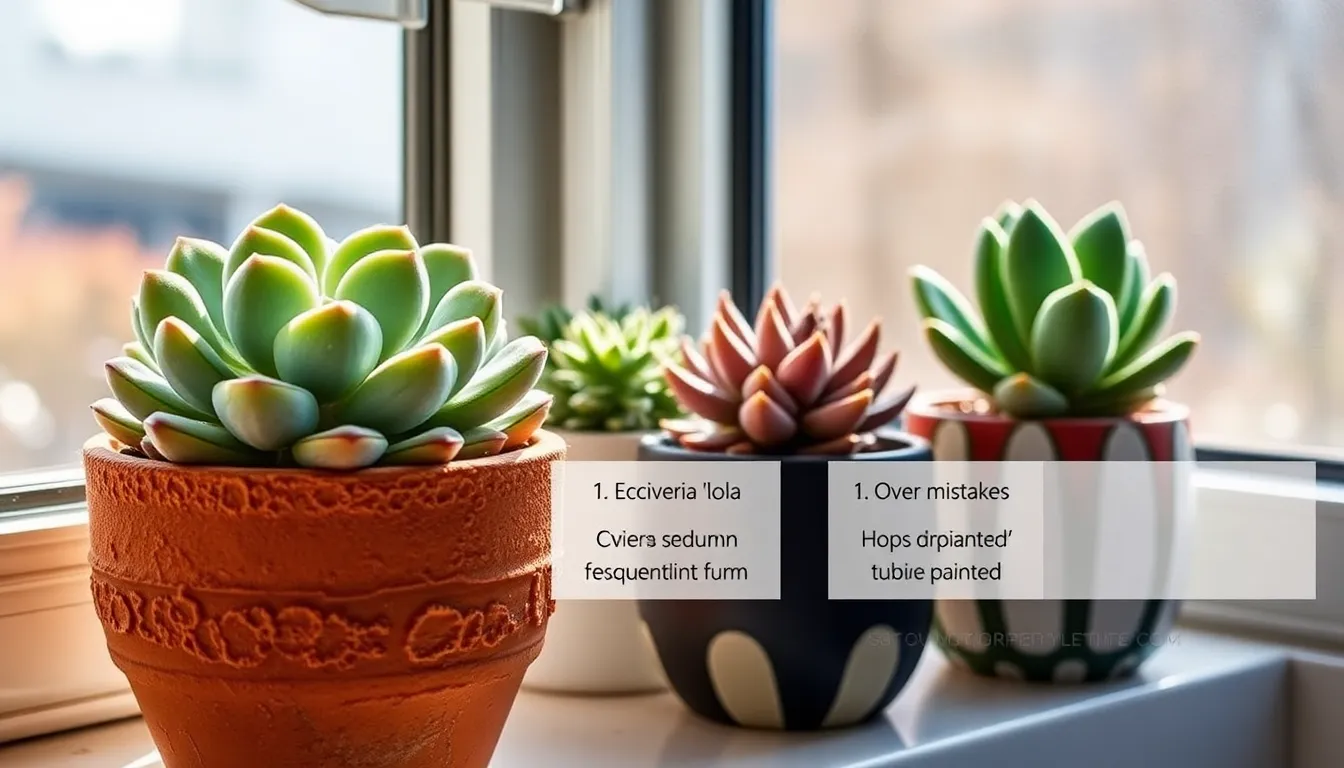Growing succulents can feel like a delightful dance with nature, offering both beginners and seasoned gardeners a chance to cultivate beauty with minimal fuss. However, even these resilient plants have specific needs, and understanding them is crucial to creating a thriving succulent oasis. With their charming shapes and vibrant colors, succulents might seem effortless, but beneath their sturdy appearance lie hidden intricacies.
In this article, we’ll uncover the seven most common mistakes gardeners make when caring for these remarkable plants, ensuring your succulents flourish rather than flounder. From mastering watering techniques to selecting the right soil, you’ll gain insights that will bolster your confidence and enhance your gardening repertoire. Whether you’re nurturing your first echeveria or expanding a sprawling aloe collection, our practical advice will help you sidestep pitfalls and cultivate a lush, healthy succulent garden.
Using Non-Draining Soil Mix

Using a non-draining soil mix is a common mistake when growing succulents, as it can lead to root rot. Succulents require a well-draining soil to thrive, so it’s crucial to choose the right mix for your plants.
For beginners, a simple way to ensure good drainage is to use a commercial cactus or succulent soil mix. These mixes are specifically designed to prevent water from lingering around the roots, reducing the risk of overwatering.
Advanced gardeners might consider creating their own soil mix by combining potting soil with coarse sand or perlite in a 2:1 ratio. This custom mix allows for optimal drainage while providing enough nutrients for succulent growth.
Remember, the choice of pot is equally important to prevent waterlogging. Always opt for pots with drainage holes to allow excess water to escape, ensuring the health of your succulents.
Neglecting Temperature Needs
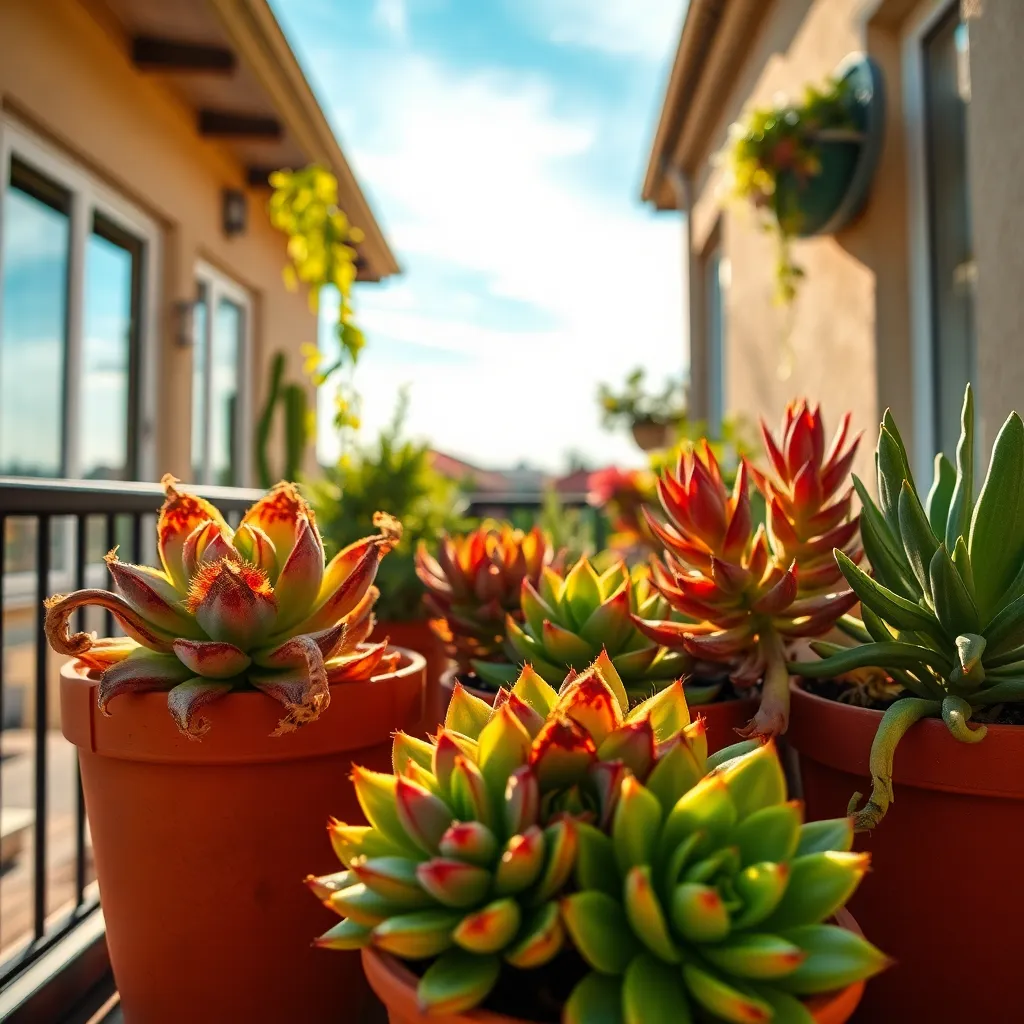
Temperature plays a crucial role in the health of your succulents, yet it’s often overlooked. Succulents thrive in warm, dry conditions, and exposing them to cold temperatures can lead to damage or even death.
For beginners, it’s essential to understand that most succulents prefer temperatures between 60°F and 80°F. If you live in a region with colder winters, consider bringing your succulents indoors when temperatures drop below 50°F.
Advanced gardeners can utilize tools like temperature gauges to monitor their growing environment closely. Providing a stable temperature range ensures your succulents remain stress-free and can focus on thriving rather than surviving.
To protect your plants from sudden temperature changes, avoid placing them near drafty windows or heat sources. Consistent temperatures help prevent shock that can lead to leaf drop or rot, ensuring your succulents stay healthy year-round.
Ignoring Pot Size Importance
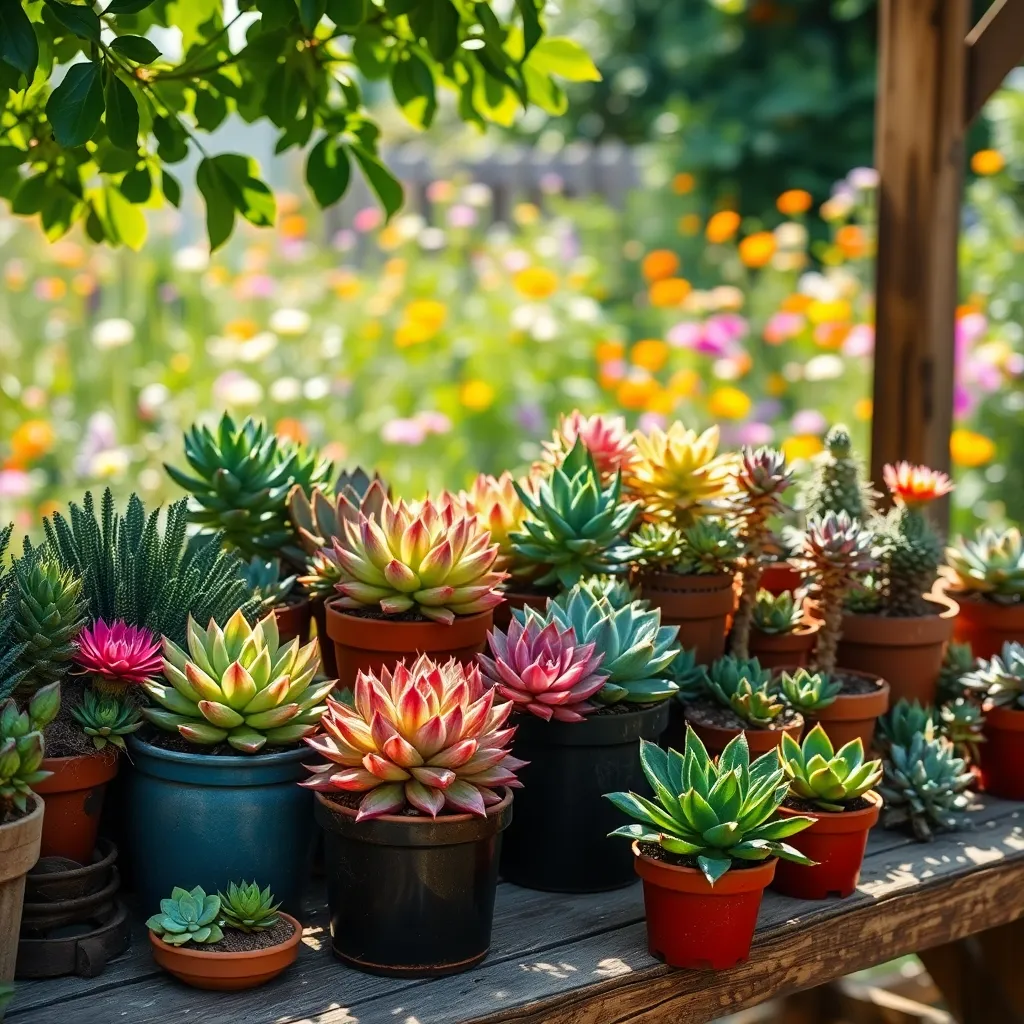
Choosing the right pot size for your succulents is crucial for their health and growth. A pot that’s too small can restrict root development, while one that’s too large can lead to overwatering issues.
To ensure your succulents thrive, start with a pot that is just slightly larger than the plant’s root ball. This encourages the roots to establish quickly and helps prevent excessive moisture retention in the soil.
It’s important to select a pot with adequate drainage holes to avoid waterlogging, which can cause root rot. Consider using pots made from breathable materials like terracotta, which help wick moisture away from the soil.
Advanced gardeners might experiment with repotting techniques to manage growth and rejuvenate older plants. For instance, repotting every one to two years can refresh the soil, providing your succulents with new nutrients and a healthier growing environment.
Overfertilizing and Nutrient Imbalance
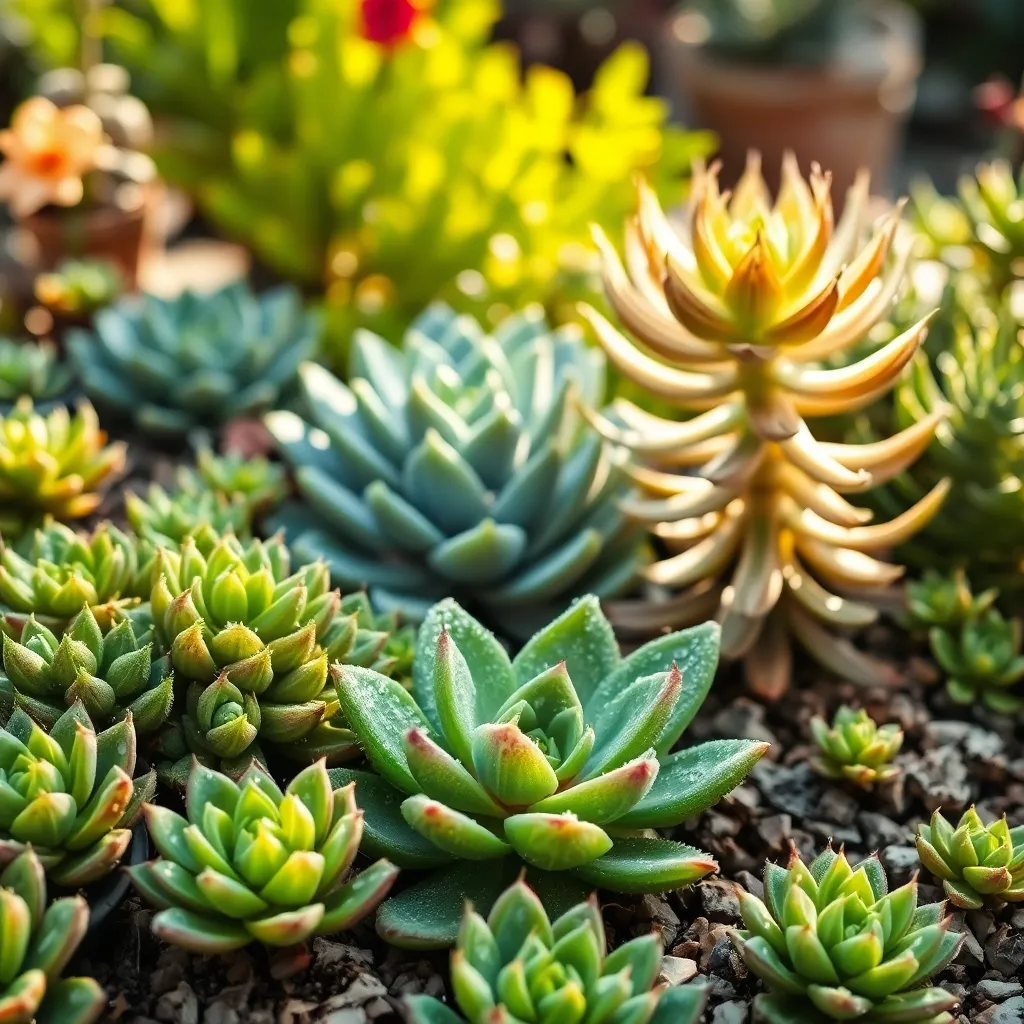
Overfertilizing succulents can lead to more harm than good, despite the common belief that more nutrients mean better growth. Excess nutrients can cause succulents to become leggy, weak, and prone to diseases. To avoid this, use a balanced, slow-release fertilizer diluted to half strength, and apply it only during the growing season, typically in spring and summer. This ensures that your succulents receive the right amount of nutrients without overwhelming them.
Nutrient imbalance often results from using the wrong type of fertilizer or applying it at the wrong time. Succulents have specific nutrient needs that differ from other houseplants, requiring low-nitrogen fertilizers. A fertilizer with an N-P-K ratio of about 5-10-10 is usually suitable, as it supports strong root development and vibrant foliage without excessive leaf growth. Regularly check the soil’s pH and adjust as needed, aiming for a slightly acidic to neutral range (around 6.0 to 7.0).
For beginners, it might be tempting to fertilize frequently, thinking it will accelerate growth, but less is more with succulents. Apply fertilizer just once or twice during the active growing season to maintain a healthy balance. For those with more experience, consider using organic fertilizers like compost tea, which provide nutrients more gently and improve soil health over time. Always monitor your plants for signs of overfertilization, such as brown leaf tips or accelerated growth, and adjust your fertilization schedule accordingly.
Crowding Multiple Succulents Together
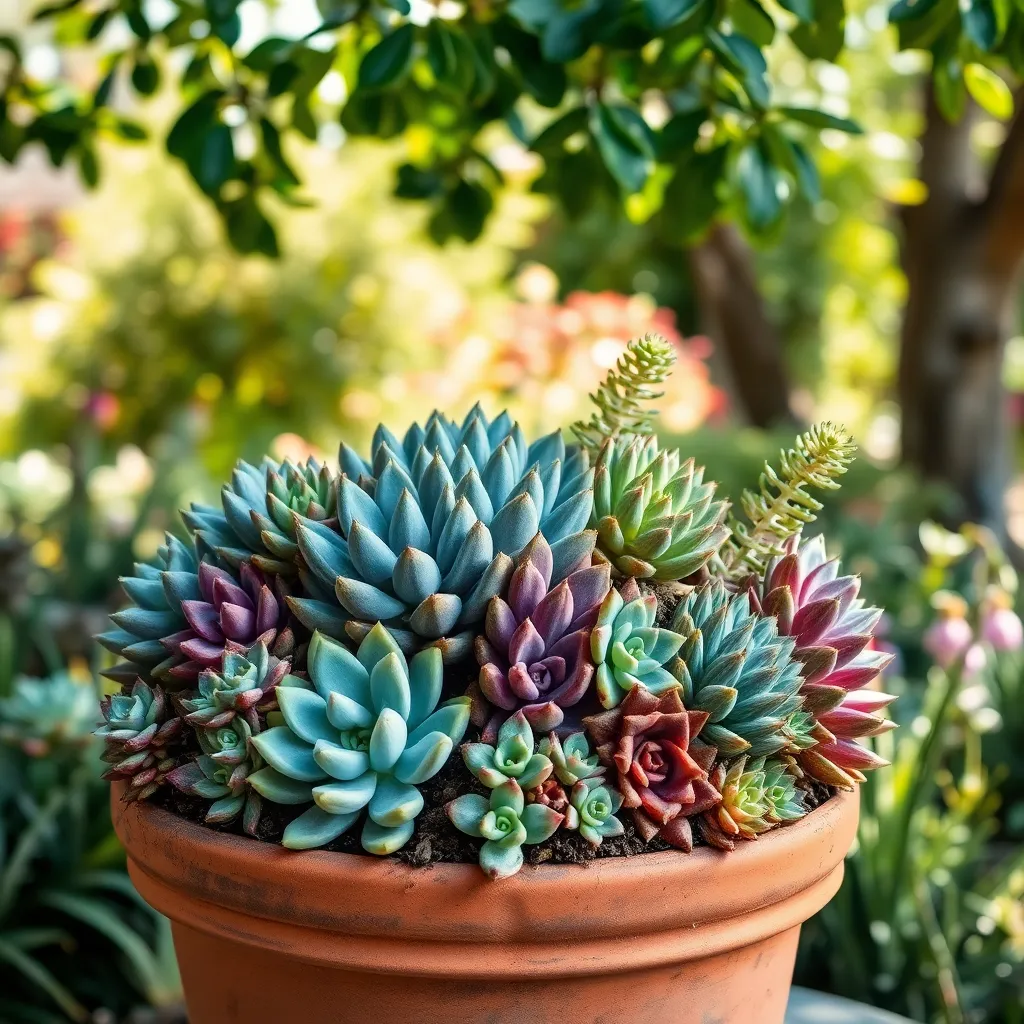
Crowding multiple succulents together can lead to several issues, including poor air circulation and increased risk of disease. To avoid these problems, it’s essential to provide each succulent with enough space to grow and breathe comfortably.
When planting succulents, ensure each plant has its own dedicated space by leaving at least a few inches between them. This spacing allows for proper airflow and reduces the chance of mold and mildew developing, which are common in tightly packed arrangements.
Additionally, consider the growth habits of your succulents, as some varieties spread more than others. For example, trailing succulents like String of Pearls need more room to cascade, while compact types like Echeveria can be planted somewhat closer together.
Using the right soil is crucial when crowding succulents to ensure optimal drainage and prevent root rot. Opt for a well-draining cactus mix or create your own blend with 50% potting soil, 30% sand, and 20% perlite to maintain a healthy root environment.
Skipping Regular Inspection for Pests
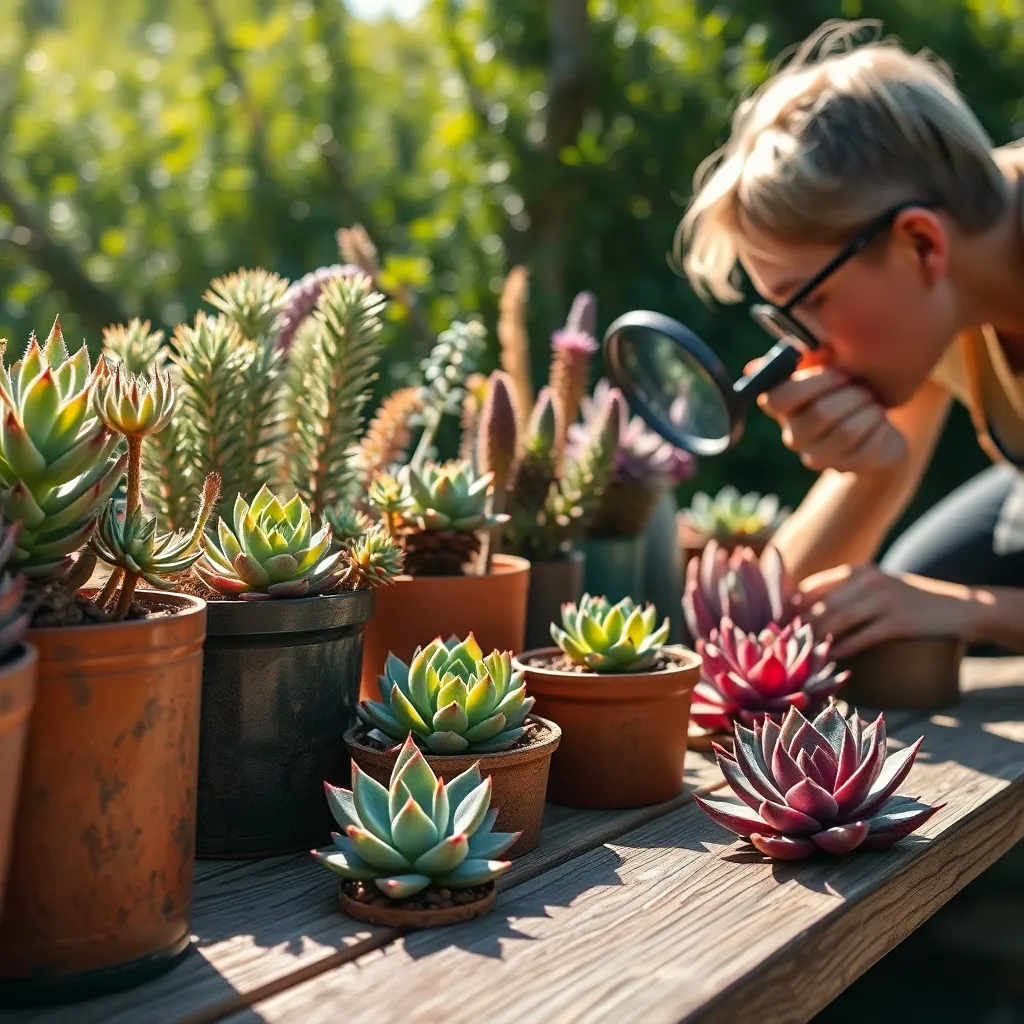
Regular inspection for pests is crucial when growing succulents. Skipping this step can lead to infestations that are harder to control later on.
It’s important to develop a routine of checking your succulents at least once a week. Look for signs of pests such as discolored leaves or a sticky residue on the plant.
Common pests include mealybugs, aphids, and spider mites, which can all cause severe damage if left untreated. Using a magnifying glass can help you spot tiny pests that are otherwise easy to miss.
To address pest issues, you can start by gently wiping the affected areas with a cotton swab dipped in alcohol. For more severe infestations, consider using insecticidal soap, ensuring it is safe for succulents.
Additionally, maintaining proper plant hygiene can prevent many pest problems. Make sure to remove dead leaves and debris from around your succulents, as these can attract unwanted insects.
For those looking to enhance their pest management strategies, introducing beneficial insects like ladybugs can offer a natural solution. They feed on harmful pests and provide a sustainable option for keeping your succulents healthy.
Improperly Handling Succulent Leaves
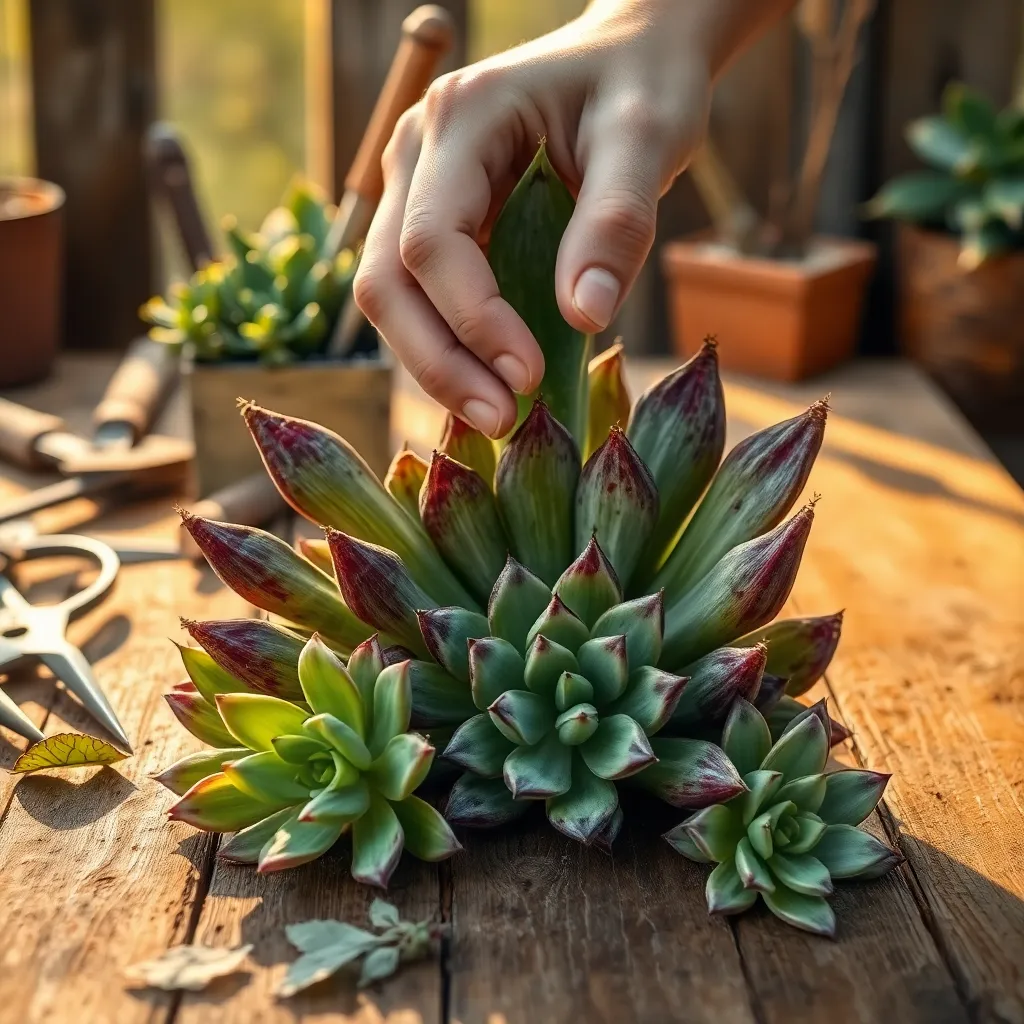
Handling succulent leaves with care is crucial to their overall health and growth. When you handle them too roughly, you risk breaking the leaves, which can lead to rot and other issues. Always use a gentle touch when planting or repositioning succulents, holding them by the base rather than the leaves. This minimizes damage and stress to the plant, which is essential for its development.
It’s important to remember that succulent leaves are not just fragile but also vital for the plant’s water storage. Damaged leaves can compromise the plant’s ability to retain water, making it more susceptible to drought conditions. To avoid this, use tools like soft-bristled brushes or tweezers to clean around the plant without disturbing it. These tools allow you to maintain the plant’s appearance and health without risking harm.
For those with more experience, consider propagating succulents by gently removing healthy leaves for new growth. This requires precision and patience, ensuring the leaf is detached cleanly to promote successful propagation. Once you have removed a leaf, let it dry for a few days before placing it on well-draining soil. Keeping the soil lightly moist will encourage root development without causing rot.
Avoid overwatering, as this can exacerbate any damage to the leaves, leading to further complications. Succulents thrive in conditions where they can dry out between watering, typically requiring water every one to two weeks depending on the climate. Use a soil mix designed for cacti and succulents, which offers excellent drainage and helps prevent root rot. By understanding and implementing these practices, you ensure your succulents remain healthy and vibrant.
Conclusion: Growing Success with These Plants
In nurturing both relationships and succulents, attentiveness and care make all the difference. We’ve journeyed through 7 pivotal concepts: understanding the uniqueness of each succulent (and person), ensuring proper communication (or watering), avoiding over-nurturing, providing the right environment, being patient with growth, learning from past missteps, and fostering resilience in the face of challenges. Together, these insights illuminate the path to thriving partnerships and plants alike.
Now, take a moment to reflect on one relationship that could use a little extra care. Identify a specific concept from this article to apply today, whether it’s improving communication or creating a more supportive environment.
As you embark on this journey of growth, remember to save this article for those times when you need a gentle reminder or fresh perspective. Bookmark it now to easily revisit these nurturing strategies whenever needed.
With consistent effort and mindful attention, your relationships—like your succulents—can flourish and bring lasting joy. Embrace this opportunity for growth, and watch as your connections deepen and strengthen, cultivating a garden of relationships that thrive for years to come.
